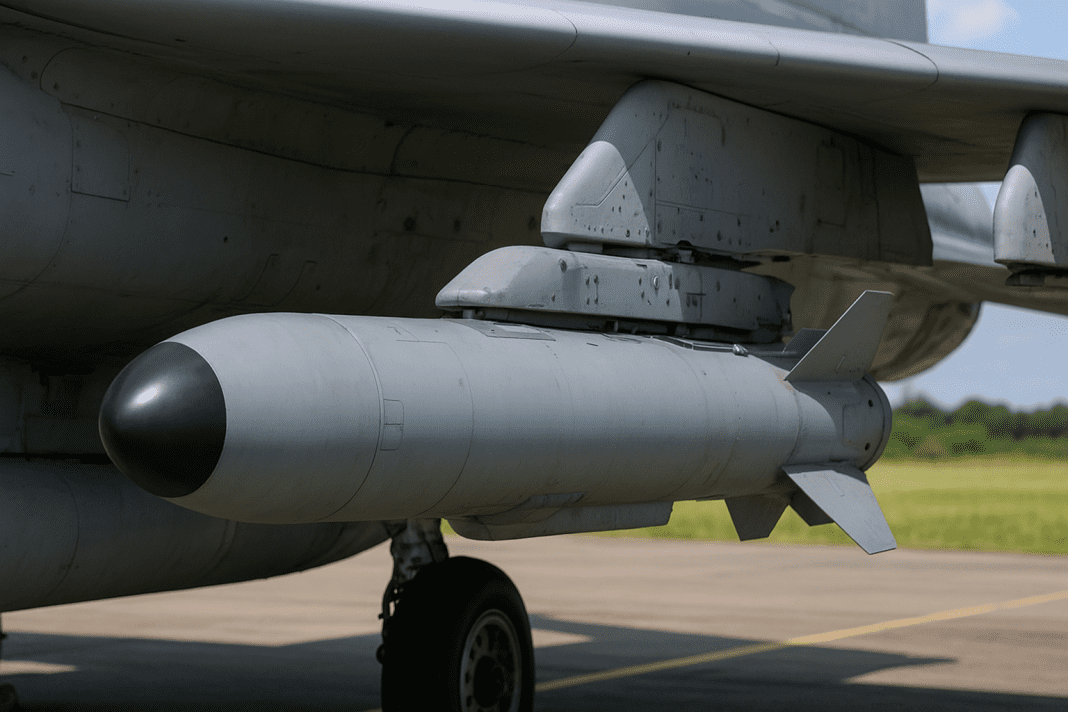The United States government has authorized the possible sale of new AGM-65 Maverick tactical missiles to the Republic of Korea Air Force (ROKAF), marking another key step in defense cooperation between the two allies. Valued at approximately US$34 million, this sale falls under the Foreign Military Sales (FMS) program, which facilitates arms transfers between the U.S. and its trusted partners.
Strengthening South Korea’s Aerial Firepower
According to official details shared by the Defense Security Cooperation Agency (DSCA), this decision aims to support South Korea’s ongoing efforts to upgrade its air-to-ground strike capability. The U.S. Department of State notified Congress of the sale, confirming its intention to enhance the Republic of Korea’s capacity to deter regional aggression and maintain operational compatibility with American forces.
The authorized sale includes forty-four (44) AGM-65G2 Maverick tactical missiles, designed for precision strikes on a variety of surface targets. RTX Corporation (formerly Raytheon Technologies) has been listed as the principal contractor for this program. While the notification did not specify which aircraft would use the new missiles, South Korea operates several fighter jets capable of carrying the Maverick system, including the KAI FA-50 light fighter, the KF-16 multirole jet, and the F-15K Slam Eagle, which is the Korean variant of the American F-15E Strike Eagle.
Trump revives Greenland-style land demand in tense summit with South Korea’s Lee Jae Myung
This move mirrors other recent U.S. defense approvals for partner nations, including Australia and Canada, which received similar authorizations for the High Mobility Artillery Rocket System (HIMARS). Together, these approvals underline Washington’s broader commitment to supporting allied nations with reliable, combat-proven defense technologies.
The Role of the Maverick Missile in Modern Warfare
The AGM-65 Maverick missile has long been one of the most reliable and versatile air-to-surface weapons in use around the world. The United States originally developed the Maverick missile in the 1960s. It officially entered service in August 1972. Over the decades, engineers have continuously improved the missile. They developed various models and subvariants, ranging from the early A version to the more advanced K version.
Many nations use the Maverick missile family for tactical air missions. Its main strengths are accuracy and adaptability. Pilots can fire it from multiple aircraft types, including the A-10 Thunderbolt II, F-15E Strike Eagle, and F-16 Fighting Falcon. Once launched, the missile guides itself to the target using an electro-optical or infrared system. This guidance allows pilots to strike tanks, bunkers, ships, or fortified ground positions from a safe distance.
South Korea finalizes UN draft resolution on Iran sanctions amid snapback process
South Korea chose the AGM-65G2, one of the most capable models in the Maverick series. This version features an infrared imaging guidance system. It enables the missile to operate effectively in both day and night conditions. According to U.S. Air Force data, the G2 model uses nearly the same guidance system as the older D variant. It also has software enhancements that help it track larger or heat-emitting targets more efficiently.
One of the main distinctions of the G model is its heavier penetrator warhead. This warhead is designed to strike harder targets, such as bunkers, concrete shelters, and armored vehicles. Earlier versions, like the B and D models, used a shaped-charge warhead optimized for piercing armor. The G model’s warhead can deliver more damage against fortified or larger surface structures.
Because of these characteristics, the AGM-65G2 provides South Korea with a reliable way to strengthen its ground-attack capabilities. It adds additional security and tactical depth to the country’s air defense strategy.
Integration of Maverick Missiles with South Korea’s Fighter Fleet
South Korea operates one of the most advanced air forces in Asia, with a diverse mix of aircraft suited for different missions. The KAI FA-50, a locally developed light combat aircraft, can be equipped with precision weapons for both air-to-air and air-to-ground missions. It serves as a flexible platform for training and quick-response operations.
The KF-16, a Korean version of the American F-16 Fighting Falcon, plays a central role in ROKAF’s defense strategy. It can perform multiple missions—ranging from interception and air patrol to precision ground strikes—and has long been compatible with Maverick missiles.
The F-15K Slam Eagle, derived from the U.S. F-15E Strike Eagle, is the most powerful aircraft in South Korea’s inventory. It combines air superiority performance with long-range strike capability. The F-15K can carry multiple Maverick missiles simultaneously, making it an effective tool for targeting ground-based threats.
By adding the new AGM-65G2 missiles, these aircraft will maintain a consistent level of interoperability with U.S. and allied air forces. According to the DSCA, South Korea already operates Maverick missiles in its inventory, so integrating this new batch will not present any technical or logistical challenges.
South Korea on High Alert After North Korea Launches Missiles and Sends 15,000 Troops to Russia
The Department of State emphasized that this sale would enhance South Korea’s ability to respond to regional security challenges. It would also help reinforce deterrence and stability in East Asia. Once finalized, the delivery will form part of a carefully managed defense cooperation framework. This framework also includes training, logistics, and ongoing maintenance support.
For South Korea, the acquisition ensures that its aircraft fleet stays equipped with modern precision-guided munitions. These weapons can handle a wide range of operational scenarios. For the United States, the deal strengthens a key regional partnership. It also ensures that advanced defense technologies continue to support shared security objectives in the Indo-Pacific.
